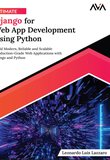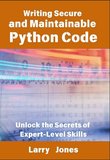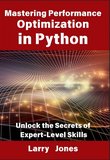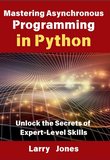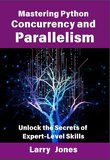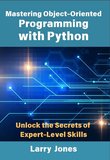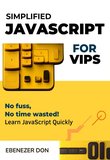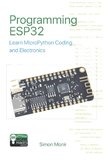-
.NET (.NET Core)
-
1C
-
APL
-
AWK
-
Agda
-
Agile/Scrum
-
Alef
-
Assembler
-
Basic
-
Beta Programming Language
-
Big Data/DataScience
-
C
-
C#
-
C++
-
CSS
-
Cobol
-
Crystal
-
D
-
Dart
-
DataBase (SQL)
-
Delphi
-
F#
-
Flutter
-
Fortran
-
GPT/AI/ИИ
-
GameDev
-
Git
-
Go (Golang)
-
HTML
-
Hacking and Security
-
Haskell
-
Java
-
JavaScript (JS)
-
Julia
-
Kotlin
-
Machine Learning (ML)
-
Natural language processing (NLP)
-
PHP
-
Pascal
-
Python
-
R
-
Ruby
-
Rust
-
Scratch
-
Swift
-
UML
-
UX/UI
-
Visual Basic
-
Wolfram
-
XML
-
АСУ
-
Проектирование/System Design
-
Сети/Network
-
Схемотехника/электронные схемы
-
.NET (.NET Core)
-
1C
-
APL
-
AWK
-
Agda
-
Agile/Scrum
-
Alef
-
Assembler
-
Basic
-
Beta Programming Language
-
Big Data/DataScience
-
C
-
C#
-
C++
-
CSS
-
Cobol
-
Crystal
-
D
-
Dart
-
DataBase (SQL)
-
Delphi
-
F#
-
Flutter
-
Fortran
-
GPT/AI/ИИ
-
GameDev
-
Git
-
Go (Golang)
-
HTML
-
Hacking and Security
-
Haskell
-
Java
-
JavaScript (JS)
-
Julia
-
Kotlin
-
Machine Learning (ML)
-
Natural language processing (NLP)
-
PHP
-
Pascal
-
Python
-
R
-
Ruby
-
Rust
-
Scratch
-
Swift
-
UML
-
UX/UI
-
Visual Basic
-
Wolfram
-
XML
-
АСУ
-
Проектирование/System Design
-
Сети/Network
-
Схемотехника/электронные схемы
Меню
Mastering Advanced Python Typing: Unlock the Secrets of Expert-Level Skills

Автор: Jones Larry
Дата выхода: 2024
Издательство: Nobtrex L.L.C.
Количество страниц: 344
Размер файла: 4,1 МБ
Тип файла: PDF
Добавил: codelibs
1 Introduction to Advanced Python Typing
1.1 Evolution of Type Hinting in Python
1.2 Benefits of Using Type Hints
1.3 Basic Syntax and Semantics of Type Hints
1.4 Type Annotations and their Impact on Code
1.5 The Role of the MyPy Type Checker
1.6 Transitioning from Dynamic to Statically Typed Python
2 Static and Dynamic Typing in Depth
2.1 Understanding Static Typing
2.2 Dynamic Typing and Its Flexibility
2.3 Comparative Analysis: Static vs Dynamic Typing
2.4 Type Inference and Its Role
2.5 Using Type Hints to Simulate Static Typing
2.6 Challenges of Combining Static and Dynamic Typing
2.7 Practical Applications and Examples
3 Type Variables and Generics
3.1 Defining and Using Type Variables
3.2 Creating Generic Functions
3.3 Implementing Generic Classes
3.4 Bounded Type Variables
3.5 Covariance and Contravariance
3.6 Real-World Applications of Generics
3.7 Best Practices for Generics and Type Variables
4 Advanced Type Hinting Techniques
4.1 Union and Optional Type Hints
4.2 Type Aliases for Improved Readability
4.3 Customizing Type Checking with Typing Extensions
4.4 Leveraging Callable and Literal Types
4.5 Using TypedDict for Structured Data
4.6 Handling Variable Arguments with Type Hints
4.7 Metaclass-Based Type Hinting
5 Using Protocols for Structural Subtyping
5.1 Understanding Structural Subtyping
5.2 Defining Protocol Classes
5.3 Implementing Protocols in Practice
5.4 Static Type Checking with Protocols
5.5 Variable and Method Overloading in Protocols
5.6 Combining Protocols with Other Type Constructs
5.7 Advanced Protocol Techniques
6 Type Safety and Unit Testing
6.1 The Relationship Between Type Safety and Testing
6.2 Types as a Tool for Writing Robust Tests
6.3 Integrating Type Checking into Test Suites
6.4 Testing Strategies for Type-Dependent Code
6.5 Mocking and Patching in a Typed Environment
6.6 Error Handling and Type Annotations
6.7 Tools and Frameworks for Typed Unit Testing
7 Metaprogramming with Typing
7.1 Concepts of Metaprogramming in Python
7.2 Leveraging Typing for Dynamic Code
7.3 Using Decorators with Type Information
7.4 Metaclasses and Type Annotations
7.5 Dynamic Type Creation and Enforcement
7.6 Reflection and Type Introspection
7.7 Practical Examples of Typed Metaprogramming
8 Interoperability with Other Typed Systems
8.1 Understanding Typed Systems Across Languages
8.2 Interfacing Python with Statically Typed Languages
8.3 Using Foreign Function Interfaces (FFI) with Typing
8.4 Type Checking in Multi-language Projects
8.5 Exchanging Type Information with JSON and XML
8.6 Interoperability with TypeScript and JavaScript
8.7 Best Practices for Multi-language Type Management
9 Design Patterns and Typing Strategies
9.1 Combining Design Patterns with Type Hints
9.2 Singleton and Factory Patterns
9.3 Typing Strategies for Observer and Command Patterns
9.4 Decorator and Strategy Pattern Enhancements
9.5 Modeling MVC with Typing
9.6 Pattern Implementation with Protocols
9.7 Advanced Pattern Use Cases with Generics
10 Performance Considerations and Optimizations
10.1 Impact of Type Hints on Performance
10.2 Efficient Use of Type Checking
10.3 Optimizing Code with Static Analyzers
10.4 Minimizing Overhead in Type-Annotated Code
10.5 Type Hints and Compilation with Cython
10.6 Real-Time Applications and Typing
10.7 Balancing Readability, Maintainability, and Speed
Unlock the full potential of Python programming with “Mastering Advanced Python Typing: Unlock the Secrets of Expert-Level Skills.” This comprehensive guide delves into the critical aspects of advanced typing techniques, providing developers with the tools they need to write more robust, maintainable, and efficient code. By exploring topics like static and dynamic typing, generics, and protocols, this book transforms complex concepts into accessible strategies for enhancing your programming expertise.
Through detailed explanations and practical examples, this book offers an in-depth exploration of how type hints can revolutionize Python development. From improving code clarity and safety to optimizing performance and ensuring seamless interoperability with other typed systems, each chapter is crafted to expand your understanding of Python’s dynamic nature and the safety of static typing. Packed with best practices, real-world applications, and problem-solving insights, this guide is an indispensable resource for professional developers seeking to elevate their skills.
Engage with the book to discover how advanced typing integrates with design patterns, supports effective unit testing, and navigates metaprogramming challenges. Whether you’re a seasoned developer looking to refine your techniques or you want to future-proof your code in complex software projects, “Mastering Advanced Python Typing” equips you with the knowledge and confidence to excel in today’s demanding programming environments. Embrace the opportunity to transform your approach to coding and maximize Python’s capabilities like never before.
